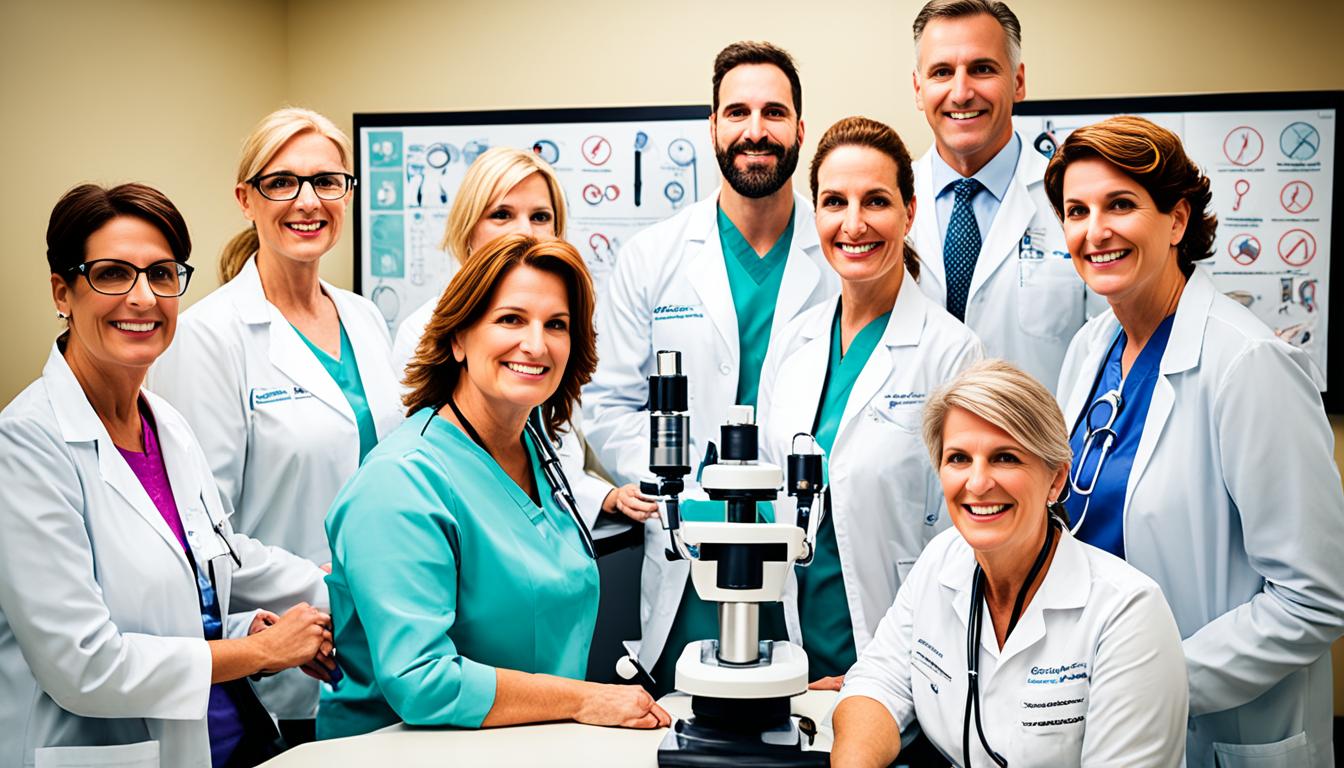HPV, or human papillomavirus, is a viral infection that spreads during sex. It can cause genital warts and raise cancer risks. In the U.S., 79 million people have HPV. Every year, about 14 million new cases are found.
It’s vital to know about HPV’s signs, how it spreads, and how doctors diagnose it. This knowledge helps in preventing and dealing with the disease. Also, scientists are looking into using stem cell therapy to help treat HPV’s effects.
Key Takeaways:
- HPV is a viral infection commonly transmitted through sexual contact.
- It can cause symptoms such as genital warts and increase the risk of certain cancers.
- Approximately 14 million new cases of HPV are diagnosed each year in the United States.
- Understanding the symptoms, causes, and diagnosis methods is crucial for prevention and management.
- Stem cell therapy is being researched as a potential treatment option for HPV-related conditions.
HPV Symptoms, Diagnosis, and Treatment Options
HPV infections vary from person to person. They often show up as genital warts. These warts can look like small skin bumps or have a cauliflower shape. They might itch, burn, or cause discomfort. For some, HPV increases the chance of getting cervical cancer.
It’s vital to notice any genital changes and get help if something seems off. A doctor can check for genital warts through a simple exam or tests like a biopsy or Pap smear.
The treatment for HPV changes depending on its type and how bad it is. A doctor could prescribe creams or antiviral drugs to manage symptoms and limit the virus’s spread. For severe cases, surgery might be needed to remove warts.
Other treatments for HPV include methods like cryotherapy, electrocautery, laser therapy, and surgery. While these can help with symptoms and remove the warts, they don’t kill the virus entirely. So, the virus might still be in the body, possibly spreading to others.
It’s key to have regular screenings and Pap smears. These tests can spot signs of HPV early, like cancer or precancerous cells. Catching these issues early means better treatment and outcomes. So, it’s important for everyone to follow their healthcare provider’s screening advice.
Treatment Options for HPV Infections
Here are some common treatments for HPV your healthcare provider might suggest:
| Treatment Option | Description |
|---|---|
| Medication | Topical creams or antiviral drugs might be given to help with symptoms and stop the virus from spreading. |
| Surgical Interventions | In more severe or lasting cases, surgery to remove warts might be needed. |
| Therapies | Treatments like cryotherapy and laser surgery are used to take out warts and ease symptoms. |
It’s very important to talk to your healthcare professional to decide the best treatment plan for you. It depends on your individual situation and how bad your symptoms are.
HPV Prevention and the Role of Vaccination
The best way to stop HPV infection is by getting a vaccination. The CDC says it’s smart for both boys and girls to get the HPV vaccine when they’re 11 or 12 years old. The vaccine, like Gardasil 9, guards against many HPV strains. These strains cause genital warts and cervical cancer.
It’s important to get the HPV vaccine before you start being sexually active. This early action helps lower the chance of getting or spreading HPV. It also reduces the risk of getting serious health issues like cervical cancer.
Along with the vaccine, there are ways to cut down on HPV spread. Use protection during sex, like condoms, to stay safe. Also, it’s good to not have too many sexual partners. And avoid skin-to-skin contact with infected areas or items. These steps are key to staying healthy sexually.
Focus on HPV prevention through vaccination and safe sex to keep healthy. Talk with your doctor to see what vaccination and protection are best for you. After all, it’s easier to stop an illness than to treat it.

